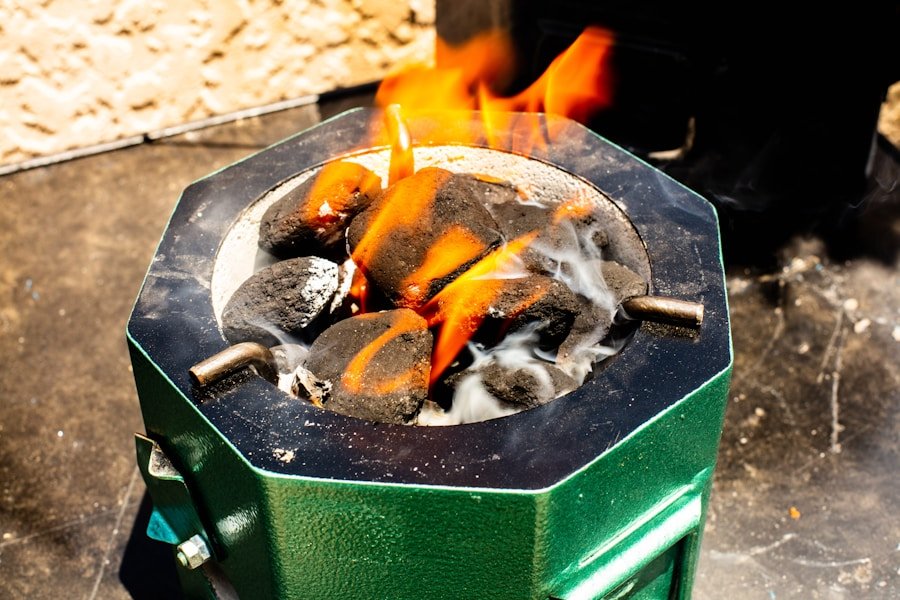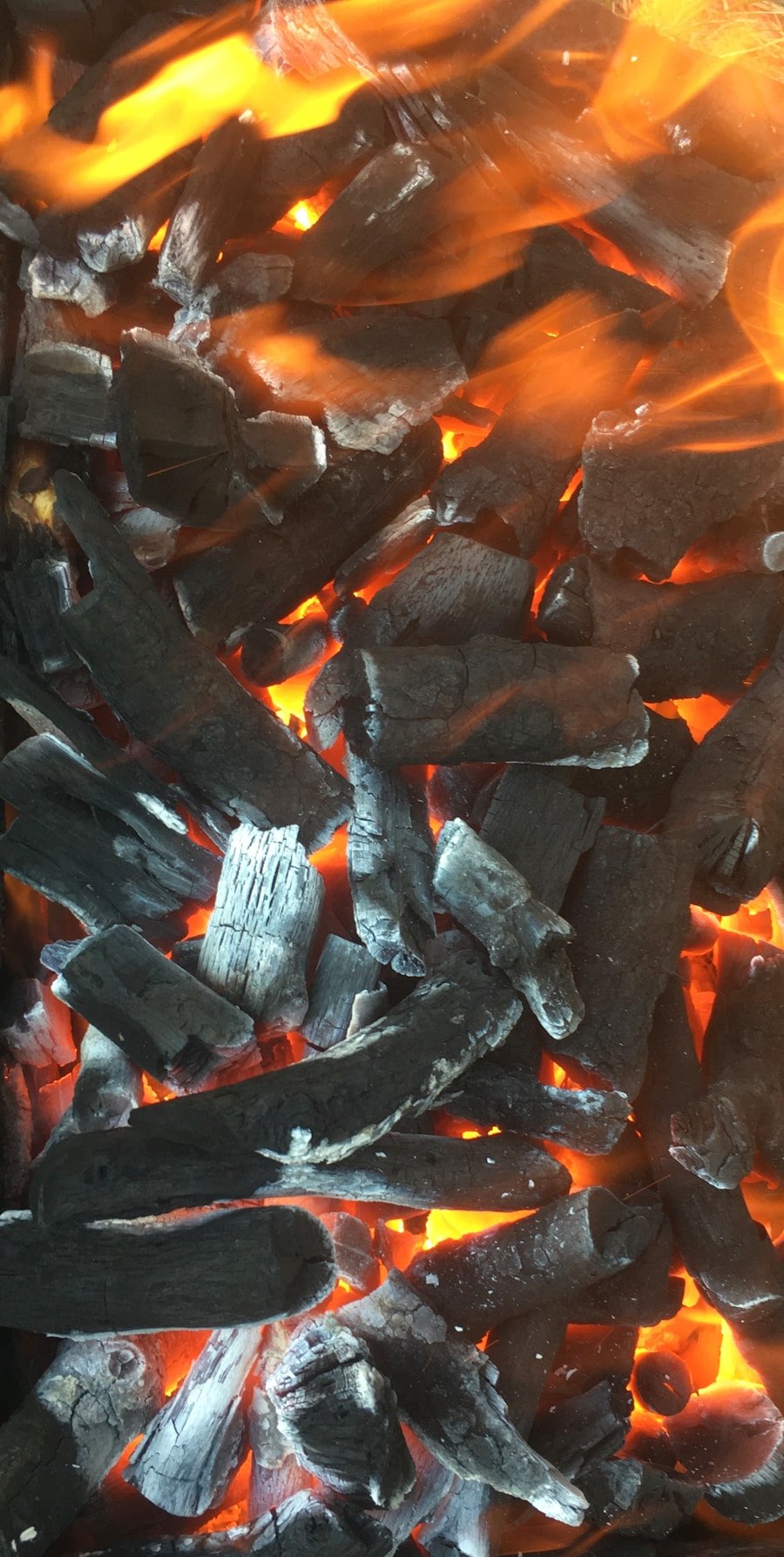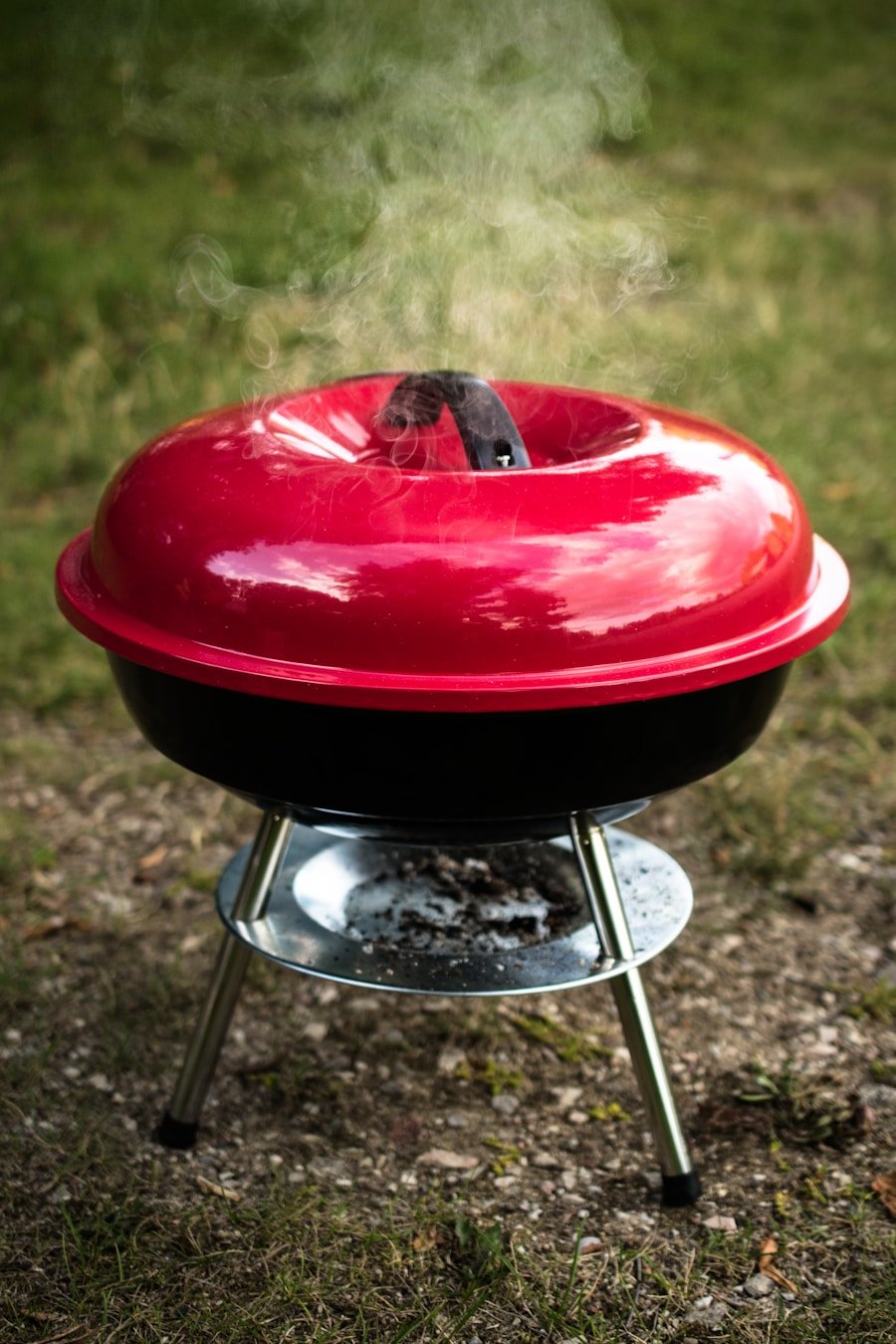When embarking on the journey of smoking meat, the choice of charcoal is paramount. Charcoal comes in various forms, each with its unique characteristics that can significantly influence the flavor and cooking process. Lump charcoal, for instance, is made from pure wood and burns hotter and cleaner than briquettes.
It ignites quickly and produces less ash, making it a favorite among many pitmasters. The natural wood flavor imparted by lump charcoal can enhance the overall taste of the smoked meat, providing a more authentic barbecue experience. However, it can be more challenging to maintain a consistent temperature due to its rapid burn rate.
On the other hand, briquettes are a more common choice for those who prefer a steady and prolonged burn. They are typically made from compressed sawdust and other additives, which can sometimes lead to a less pure flavor profile. However, many brands have emerged that focus on producing high-quality briquettes with minimal additives, allowing for a cleaner burn.
When selecting briquettes, it’s essential to look for those that are 100% natural and free from chemical accelerants. The choice between lump charcoal and briquettes often comes down to personal preference and the specific requirements of the smoking session.
Key Takeaways
- Choose high-quality charcoal for a clean and consistent burn
- Ensure the smoker is clean and properly set up before use
- Select cuts of meat with good marbling and thickness for even smoking
- Season the meat with a dry rub or marinade for added flavor
- Monitor and adjust the temperature throughout the smoking process for optimal results
Preparing the Smoker
Preparing the smoker is a critical step that sets the stage for a successful smoking experience. Whether using a traditional offset smoker, a vertical water smoker, or an electric model, ensuring that the smoker is clean and ready for use is essential. Begin by removing any leftover ash or debris from previous sessions, as this can affect airflow and temperature control.
A clean smoker not only promotes better combustion but also prevents unwanted flavors from mingling with the meat. Once the smoker is clean, it’s time to season it if it’s new or hasn’t been used in a while. Seasoning involves heating the smoker to a high temperature while applying a thin layer of cooking oil to the interior surfaces.
This process helps to create a protective layer that prevents rust and enhances flavor over time. After seasoning, allow the smoker to cool down before adding charcoal and wood chips. Proper preparation of the smoker ensures that it operates efficiently and provides an optimal environment for smoking meat.
Selecting the Perfect Cuts of Meat

The selection of meat is one of the most enjoyable aspects of the smoking process, as different cuts offer unique flavors and textures. When choosing meat for smoking, it’s essential to consider both the type of meat and its fat content. Cuts with higher fat content, such as brisket or pork shoulder, are ideal for smoking because they remain moist during the long cooking process.
The fat renders down, basting the meat and infusing it with flavor, resulting in tender and juicy bites. For those looking to experiment with different flavors, consider less common cuts like beef short ribs or lamb shoulder. These cuts may require longer cooking times but can yield exceptional results when smoked correctly.
Additionally, poultry such as whole chickens or turkey breasts can also be excellent choices for smoking. The key is to select cuts that will benefit from low and slow cooking methods, allowing the flavors to develop fully while ensuring that the meat remains succulent.
Seasoning and Preparing the Meat
| Meat Type | Seasoning | Preparing |
|---|---|---|
| Beef | Garlic, salt, pepper | Grill or roast |
| Chicken | Paprika, thyme, salt | Bake or grill |
| Pork | Mustard, brown sugar, pepper | Smoke or roast |
Once you have selected your cuts of meat, the next step is seasoning them appropriately. A good rub can elevate the flavor profile of smoked meat significantly. There are two primary types of seasoning: dry rubs and marinades.
Dry rubs typically consist of a blend of spices, herbs, salt, and sugar that are massaged into the surface of the meat. Common ingredients include paprika, garlic powder, onion powder, black pepper, and brown sugar. The sugar caramelizes during smoking, creating a beautiful crust known as bark.
Marinades, on the other hand, involve soaking the meat in a liquid mixture that often includes acidic components like vinegar or citrus juice, along with various spices and herbs. This method not only adds flavor but also helps to tenderize tougher cuts of meat. Whichever method you choose, allow the meat to rest after seasoning; this resting period enables the flavors to penetrate more deeply into the meat fibers.
For optimal results, consider letting your seasoned meat sit in the refrigerator for several hours or even overnight before smoking.
Controlling the Temperature
Temperature control is one of the most critical aspects of successful smoking. Maintaining a consistent temperature throughout the cooking process ensures that the meat cooks evenly and thoroughly while preventing it from drying out. Most smoking recipes recommend a temperature range between 225°F to 250°F (107°C to 121°C) for low-and-slow cooking.
To achieve this, it’s essential to monitor both the internal temperature of the smoker and the meat itself. Using a reliable thermometer is crucial for this task. Many smokers come equipped with built-in thermometers; however, these can sometimes be inaccurate.
Investing in a high-quality digital thermometer with probes allows you to monitor both ambient smoker temperature and internal meat temperature simultaneously. Adjusting airflow through vents or adding more charcoal can help regulate temperature fluctuations during cooking. Patience is key; resist the urge to frequently open the smoker door, as this can cause heat loss and extend cooking times.
Adding Flavor with Wood Chips

Wood chips play an integral role in imparting flavor to smoked meats. Different types of wood produce distinct flavors; therefore, selecting the right wood is essential for achieving your desired taste profile. For instance, hickory is known for its strong, smoky flavor that pairs well with pork and beef, while applewood offers a milder sweetness that complements poultry and fish beautifully.
Mesquite is another popular choice but should be used sparingly due to its intense flavor. To use wood chips effectively, soak them in water for at least 30 minutes before adding them to your charcoal fire. Soaking helps prevent them from igniting too quickly and allows them to smolder instead, producing smoke over an extended period.
You can also experiment with blending different types of wood chips to create unique flavor combinations tailored to your preferences. The key is to strike a balance; too much smoke can overwhelm the meat’s natural flavors, while too little may result in a lackluster taste.
Monitoring and Maintaining the Smoking Process
The smoking process requires ongoing attention to ensure that everything goes smoothly from start to finish. Regularly check both the smoker’s temperature and the internal temperature of the meat using your thermometer. This monitoring allows you to make necessary adjustments in real-time—whether that means adding more charcoal or adjusting airflow through vents—to maintain consistent heat levels.
Additionally, consider wrapping your meat in foil during the latter stages of cooking if you notice it reaching an internal temperature plateau or if it appears to be drying out. This technique, often referred to as “the Texas crutch,” helps retain moisture while allowing the meat to continue cooking until it reaches its target doneness without developing excessive bark. Throughout this process, patience is essential; good things come to those who wait when it comes to smoking meat.
Serving and Enjoying the Perfectly Smoked Meat
After hours of careful preparation and monitoring, it’s finally time to serve your perfectly smoked creation. Allowing the meat to rest for at least 30 minutes before slicing is crucial; this resting period enables juices to redistribute throughout the meat fibers, resulting in a more flavorful and tender final product. When ready to serve, slice against the grain for optimal tenderness—this technique shortens muscle fibers and makes each bite easier to chew.
Pair your smoked meat with complementary sides such as coleslaw, baked beans, or cornbread for a complete meal experience. Consider offering various sauces on the side—such as tangy vinegar-based sauces or rich tomato-based barbecue sauces—to cater to different taste preferences among your guests. As you gather around the table with family and friends, take pride in knowing that you’ve crafted something truly special through patience and skillful technique.
The satisfaction derived from sharing your smoked masterpiece is one of the most rewarding aspects of this culinary art form.
If you’re looking to enhance your outdoor dining experience while using your charcoal smoker, you may want to check out this article on the 5 Best Outdoor Dinnerware for Entertaining. Having the right dinnerware can make your barbecue gatherings even more enjoyable. Additionally, if you’re interested in meal prepping for your smoking sessions, you might find this article on the 5 Best Lunch Containers for Work helpful. And to keep your smoker and outdoor cooking area clean, consider investing in some of the Top Microfiber Cleaning Cloths recommended in another article.
FAQs
What is a charcoal smoker?
A charcoal smoker is a cooking device that uses charcoal as its primary source of heat and smoke to cook and flavor food. It is designed to slowly cook food at low temperatures, infusing it with a smoky flavor.
How does a charcoal smoker work?
A charcoal smoker works by burning charcoal to generate heat and smoke. The food is placed in the cooking chamber, and the smoke from the charcoal infuses the food as it cooks, giving it a distinct smoky flavor.
What are the benefits of using a charcoal smoker?
Using a charcoal smoker allows for slow cooking and smoking of food, resulting in tender, flavorful dishes. It also gives the food a unique smoky flavor that is difficult to achieve with other cooking methods.
How do you use a charcoal smoker effectively?
To use a charcoal smoker effectively, it is important to properly light the charcoal, regulate the temperature, and manage the smoke levels. Additionally, choosing the right type of wood for smoking can greatly impact the flavor of the food.
What are some tips for using a charcoal smoker?
Some tips for using a charcoal smoker effectively include preheating the smoker, using a water pan to maintain moisture, and monitoring the temperature throughout the cooking process. It is also important to allow the food to rest after cooking to allow the flavors to fully develop.


1 thought on “Mastering the Art of Charcoal Smoking”